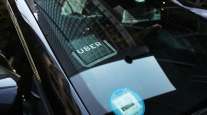Opinion: Uber Restricts Driver Hours; Should Others Follow Suit?
In an effort to combat drowsy driving, Uber announced on Feb. 12 new national rules that restrict drivers to 12-hour shifts with mandatory 6-hour breaks in between. Uber will enforce the rule through a new drive-time function in its driver app, which will first warn drivers and then temporarily cut off their access to the app, which is their only conduit to receive ride requests.
In a blog post, the company said, “This move will strengthen our approach to help keep riders and drivers safe on the road while preserving the flexibility drivers tell us they love.”
The Uber announcement drove a lot of media coverage, almost all of it positive, but it also left open opportunities to do more to improve safety.
Uber’s new rules are reminiscent of the Federal Motor Carrier Safety Administration’s own 14/10 hours of service rules — not as strict, of course, as 12/6, but still a positive step toward eliminating fatigued driving.

Allen
The National Highway Traffic Safety Administration says drowsy driving is the cause of up to 6,000 fatal crashes annually, stating that drowsiness makes drivers less able to pay attention to the road, slows reaction time if they have to brake or steer suddenly, and affects a driver’s ability to make good decisions. The NHTSA also reports that an estimated one in 25 adult drivers (aged 18 years or older) report having fallen asleep while driving in the previous 30 days. That is a frightening thought.
Some are curious about why Uber didn’t go with a 24-hour clock rather than follow an 18-hour model — but maybe this is something we’ll see change over time. Regardless, I find it interesting that Uber is tackling the problem head-on — and voluntarily — before the government imposes regulations. In my opinion, when you make the rules yourself, you’re much better off.
From here, Uber could do more. For example, it could add rudimentary telematics features to its driver app, such as the ability to measure speed or harsh braking, and use the data to educate drivers about safe driving techniques and even dismiss drivers who routinely drive unsafely. If it really wanted to go a step further with safety, it could provide drivers with onboard computers for more accurate tracking of safety metrics.
Another area for Uber to explore is how to restrict drivers’ mobile phone usage while driving. One company, Mystro, already offers an app for Uber and Lyft drivers that lets them accept and complete rides using only voice commands. It’s such a simple concept that it’s surprising Uber and Lyft haven’t yet done this on their own. Trucking fleets have been restricting access to in-cab screens in moving vehicles for years.
My hope is that what Uber is doing will motivate others to voluntarily improve their own safety practices, before the government finds the need to impose new regulations governing their practices.
For instance, fleets that don’t currently fall under FMCSA hours-of-service rules could voluntarily commit to certain driving and resting periods, using telematics to monitor and manage driver compliance. This could include smaller trucks, of course, but also different kinds of fleets, such as delivery services and even taxi fleets.
Once these fleets commit to improving safety by reducing fatigued driving, they could go deeper. They, too, could install onboard computers in their vehicles, which could help them reduce their maintenance costs, prevent crashes, reduce insurance rates and improve fuel efficiency.
Overall, Uber should be applauded for taking proactive steps to improve safety. I’d like to see other private fleets follow suit — it would make the roads safer for all of us.
MiX Telematics is a global provider of fleet and mobile asset management solutions delivered as software-as-a-service to customers managing more than 664,000 assets in more than 120 countries. As chief client officer at MiX Telematics, Pete Allen aligns the company’s resources with client business objectives.


